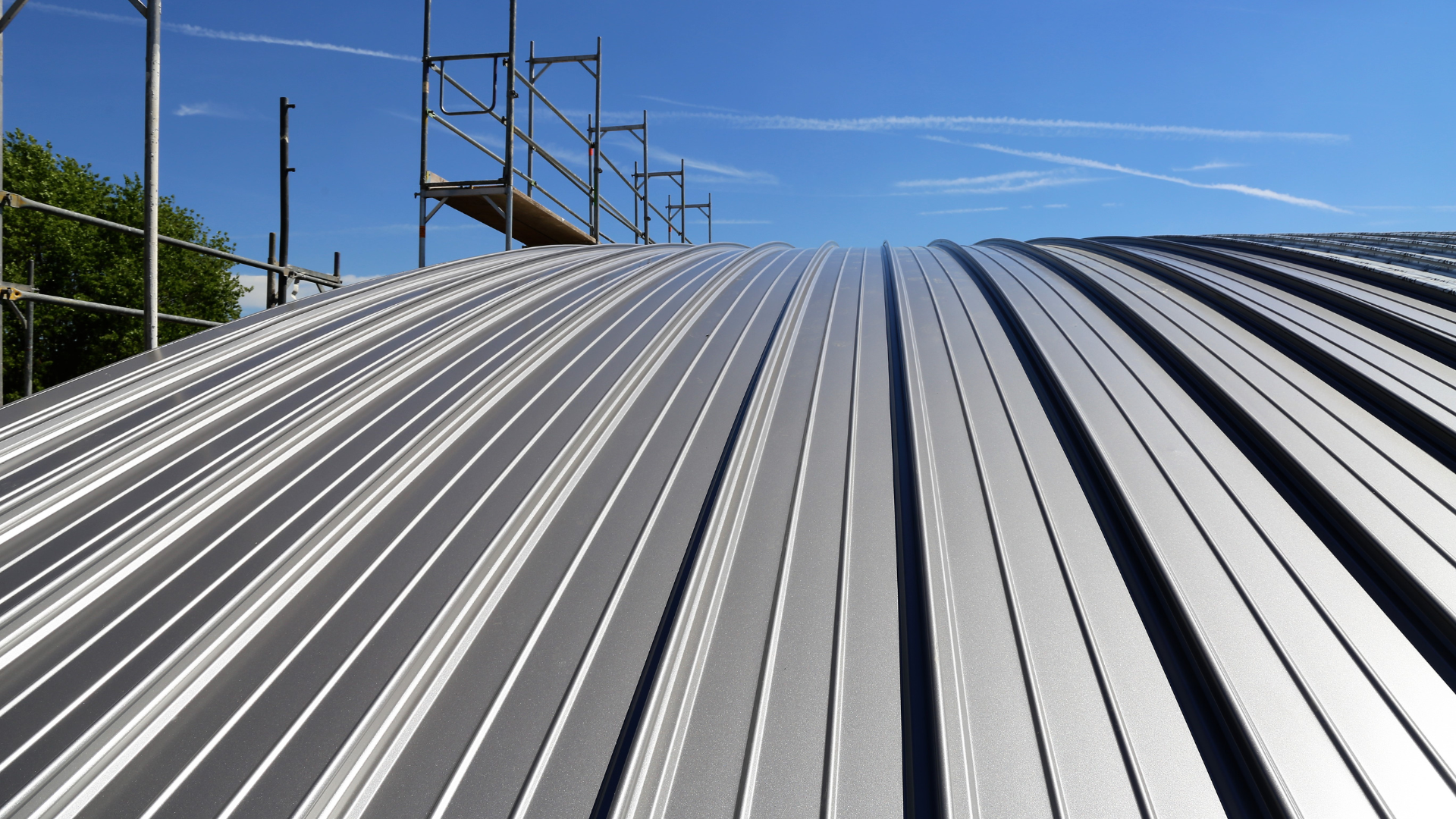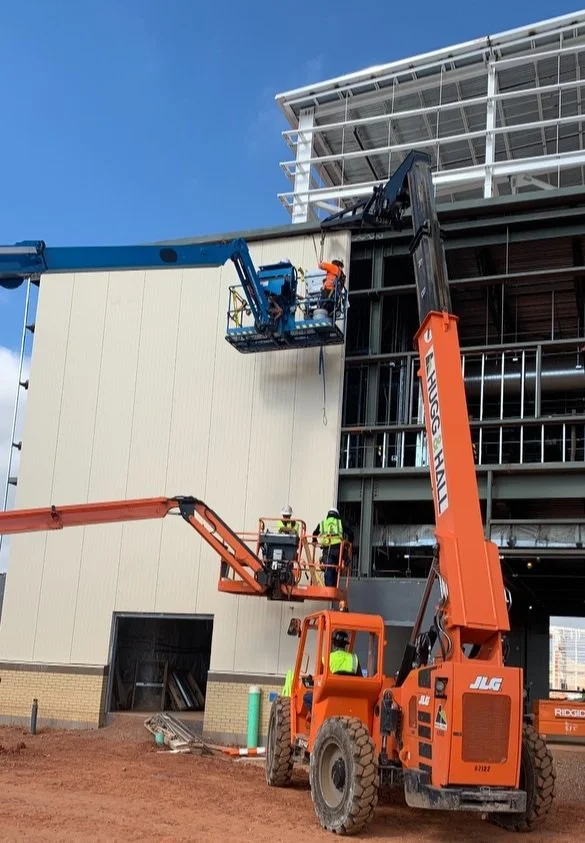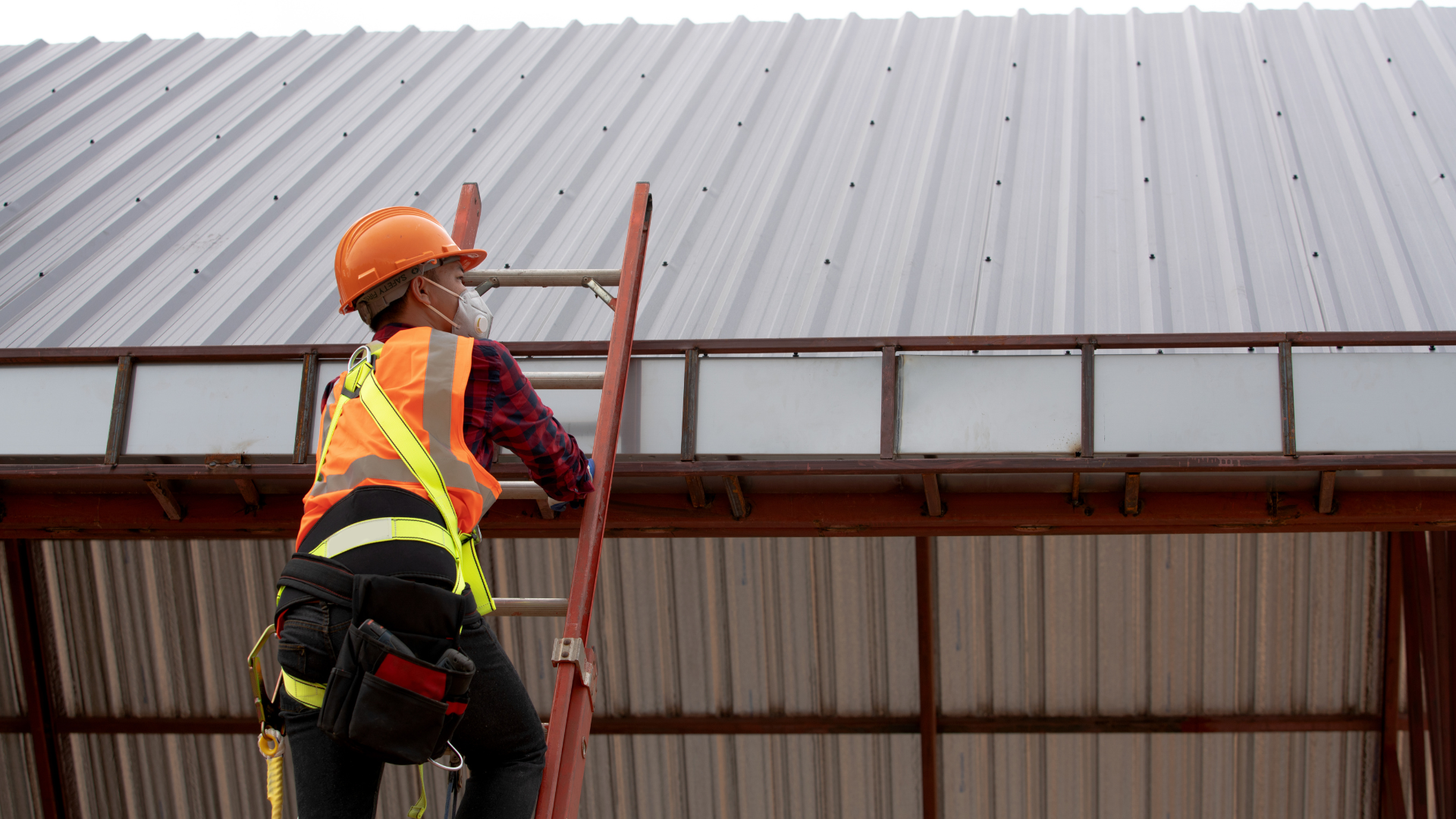Standing Seam Roof Installation Tips for PEMB Projects
When it comes to Pre-Engineered Metal Buildings (PEMBs), the roof isn’t just a cover — it’s a critical part of the structure. A well-installed standing seam roof keeps out the elements, supports the building's performance, and helps ensure the PEMB lasts for decades.
But installing these roofs takes skill and careful planning. The process comes with unique challenges around detailing, sequencing, and labor execution.
In this guide, we’ll walk through key standing seam roof installation tips to help general contractors (GCs), project managers (PMs), and developers get it right, so your PEMB roof stays watertight, secure, and built to perform.
Understanding the PEMB + Standing Seam Roof System
What is a Standing Seam Roof?
A standing seam roof is made of metal panels that run vertically up the roof. The seams between the panels are raised above the surface and interlock mechanically or with a snap-fit design. Panels are attached to the building using hidden clips and fasteners.
Standing seam systems are ideal for low to moderate roof slopes, commonly used in PEMBs. Each component of the roof assembly works together to create a high-performance system.
Key Benefits:
Watertight: Raised seams help prevent leaks.
Durable: High-quality metals and coatings stand up to the elements for decades.
Handles movement: Floating clip systems let panels expand and contract as temperatures change.
Low maintenance: Fewer exposed fasteners mean fewer maintenance headaches.
Why Standing Seam Roofs Matter for PEMB Performance
In a PEMB, the roof is more than a weather barrier. It also:
Adds lateral stability to the frame.
Completes the building envelope to keep moisture out.
Supports insulation and energy efficiency.
Helps meet building codes and energy standards.
The performance of the entire PEMB depends on the quality of the standing seam roof installation. Properly installed standing seam metal roofs contribute significantly to the overall strength, efficiency, and longevity of PEMB systems.
How PEMB Frames and Roof Structures Work Together
A PEMB roof system typically includes metal panels supported by clips and fasteners over the purlins and primary frames. Efficient roof assembly relies on precise alignment and careful detailing:
Primary frames: Steel frames or rafters.
Roof purlins: Cold-formed steel members that span between frames.
Clips: Floating or fixed clips attached to purlins to secure roof panels.
Roof panels: The standing seam panels are installed over the clips.
Fasteners and sealants: Used to secure clips and flashings and allow for movement.
Expansion joints: Manage stresses on large roof areas.
How is it different from traditional structural steel?
PEMBs are engineered to be efficient and lightweight. That means installers must work with tighter tolerances, and the standing seam panels must be perfectly aligned to ensure both performance and appearance.
Standing Seam Roof Installation Considerations for PEMBs
Panel Expansion & Contraction
Large PEMB roofs expand and contract several inches throughout the year. Thermal movement varies depending on the panel length and roof slope and can impact roof condition over time if not properly managed.
When installing seam roofing on a PEMB, it’s essential to account for this movement to prevent performance issues. If not, panels can buckle or fasteners can fail.
Tips:
Use the manufacturer-recommended floating clips.
Follow proper spacing and alignment for fasteners.
Don’t overtighten clip fasteners — panels need to move.
Fastening to PEMB Frames
Fasteners must align with roof purlins to keep the structure strong and the roof looking straight. For corrosive environments or coastal projects, using stainless steel fasteners ensures long-term durability and prevents rust.
Tips:
Use layout strings or lasers to guide clip placement.
Follow the manufacturer's torque specs to avoid damaging clips or compressing sealants.
Panel Alignment & Aesthetics
The first panel sets the path for the entire roof. Small errors at the start will get worse as you move across the roof surface. Precise alignment of the panels also ensures a clean, weather-tight fit at the ridge cap, where the roof panels meet at the peak, and the drip edge, where water drains cleanly off the roof.
Tips:
Carefully square the first panel at both the eave and ridge.
Check panel alignment often during installation.
Protect panel finishes during handling to maintain clean visual lines.
Accurate seam installation is critical for maintaining a uniform appearance and long-term weather resistance.
Integrating with Insulated Metal Panels (IMPs) & Wall Systems
Coordination is key: Gaps or misalignment between roof and wall systems can lead to leaks or energy loss. Transitions between the drip edge and wall systems must be carefully flashed to prevent moisture intrusion.
Tips:
Plan the roof metal panels and IMP installs to avoid conflicts.
Use proper transition flashings and closures designed for the specific IMP system.
Double-check connections between roof and wall panels for tight seals.
Weather & Safety Considerations
Until the full roof is complete, PEMB roofs are vulnerable to wind uplift forces.
Tips:
Install temporary bracing and secure edge panels as you go.
Monitor weather forecasts and avoid installing during high winds.
Standing seam panels are long, slippery, and must be installed at height. Training crews in best practices for seam installation minimizes the risk of accidents and extends roof performance.
Alpha Labor Co. best practices:
Crews always use full fall protection.
Panels are staged and lifted safely.
Only trained, experienced crews perform standing seam installs on PEMBs.
Sequencing Standing Seam Roof Installation in PEMB Projects
When to Schedule Roofing
Scheduling roof installation at the right time prevents damage to the roof assembly and avoids conflicts with other trades. Complete frame erection and bracing first, then install the roof before starting the wall IMP installation. Crews should plan staging and panel layout based on roof slopes and panel lengths. Careful planning for framing, fasteners, roof slopes, and seam installation results in long-lasting performance.
Common Sequencing Mistakes
Installing walls before the roof — this makes it harder to stage and handle roof panels.
Skipping frame squareness inspections before roofing.
Underestimating install time and causing overlapping trades on the roof.
How Alpha Labor Co. Coordinates PEMB Roofing with Other Trades
We work closely with GCs and PMs to align roofing schedules with steel erection and IMP installations, provide accurate labor forecasts to support project planning, and ensure that our crews operate cleanly and efficiently to minimize disruption to other trades.
A PEMB’s long-term performance depends on a high-quality roof installation. A properly detailed and sequenced roof install protects the roof condition for the life of the building. Following these standing seam roof installation tips — including proper detailing, sequencing, and disciplined installation — helps ensure the roof will perform and protect for years to come.
The right labor partner makes all the difference. At Alpha Labor Co., we provide skilled, safety-first crews who understand the complexities of PEMB roofing projects.
Need expert standing seam roof installation crews for your PEMB? Contact Alpha Labor Co. today to see how we can help.





